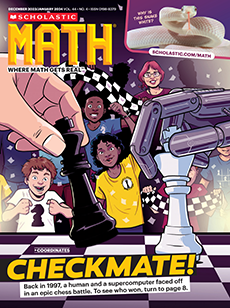Visit the site lewismillerdesign.com/flower-flash to show students images of floral arrangements by Lewis Miller known as Flower Flashes. Then ask the following questions:
• If you happened to pass one of these Flower Flashes, how might it make you feel?
• These Flower Flashes were installed by a florist. Why might the florist do this?
• Which Flower Flash do you like best? Why?
CCSS: 6.RP.A.3.C, MP1, MP2, MP8
TEKS: 6.5B
